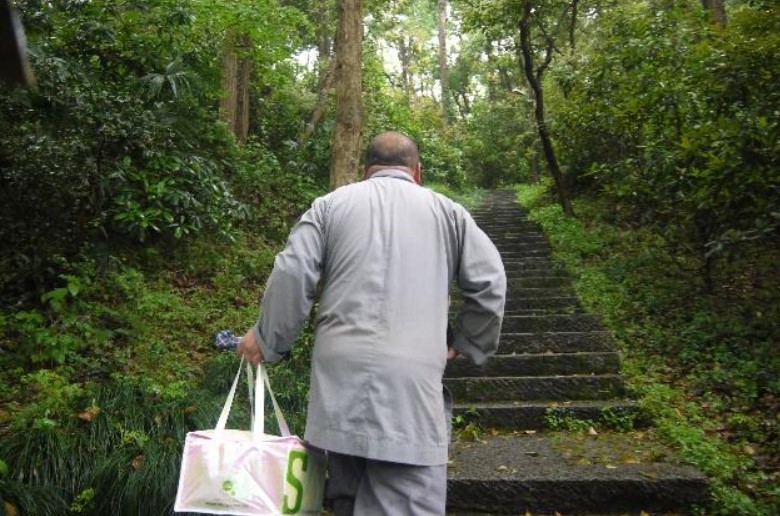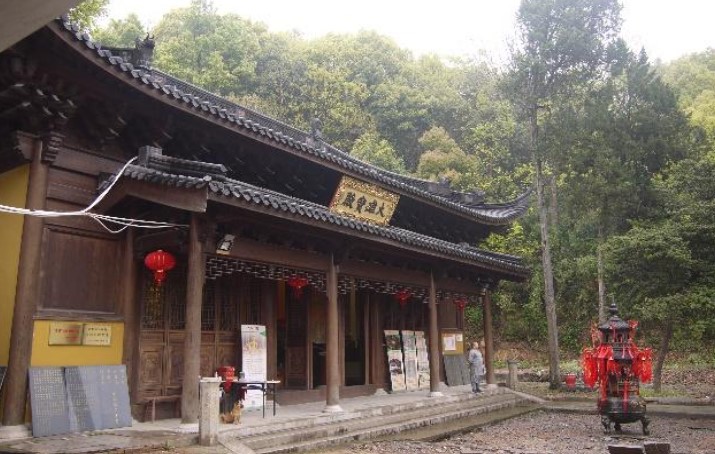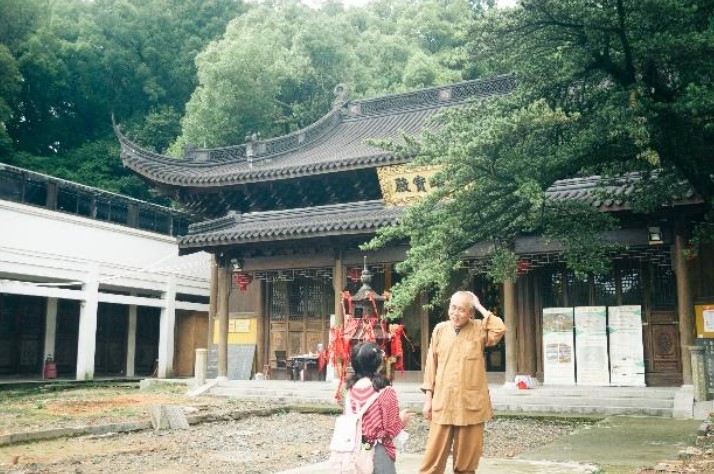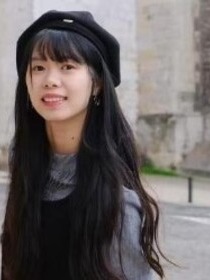A Temple, a Cake, and a Heritage Dilemma: Living with Preservation
| Date: | 09 April 2025 |
| Author: | Chengcheng Yang |

A Monk, a Cake, and a Heritage Site
The delivery worker squinted at his phone and then at the narrow path disappearing into the trees. He didn’t look convinced.
“Is there a temple here?” he asked.
“There is,” I replied, “but you’ll have to walk. About 20 minutes uphill.”
He sighed. “Someone here ordered a cake. A monk.” He showed me the receipt: Qi Yun Temple. Recipient: Shi Kuoren. In China, all Buddhist monks take the surname Shi, a nod to Shakyamuni, the historical Buddha. The name was enough to confirm it, somewhere up in the hills, a monk was waiting for his delivery.
The worker frowned. “Monks eat cake?” he muttered, as if the very idea defied a sacred order.
It was a fair question. Monks in China follow strict vegetarian diets, avoiding not only meat but also pungent ingredients like garlic and onions. Sweets, though not forbidden, are uncommon in monastic life. The worker seemed to picture monks living off rice and meditation, so the thought of one ordering a cake unsettled him.
His phone rang. A voice on the other end panted, “I’m running down! Five minutes, please wait!”
And so we waited.
Sure enough, a figure in brown robes soon appeared, descending the hillside with the momentum of someone unused to running. He was plump, middle-aged, and a little out of breath. “Not a birthday,” he explained, taking the box with both hands. “Just wanted something sweet.”
The delivery worker ended his wait, handed over the cake and rode away, shaking his head.

Waiting, and Waiting Some More
The monks at Qi Yun Temple were not unfamiliar with waiting. A cake could be delivered in minutes, but temple renovations? That was another matter entirely.
Qi Yun Temple is not what most people imagine when they think of Chinese monasteries. It has no towering golden statues, no lines of pilgrims burning incense. It is small, hidden in the hills, with just two monks and a dog. The temple remains quiet, almost forgotten, not because it has declined, but because it was never meant to be prominent.
Among the many temples in Hangzhou, Qi Yun has long maintained a modest presence, serving nearby residents and a small circle of local devotees. Its quietness is part of its character, a reflection of a more contemplative, inward-facing form of religious life. For years, it had neither the ambition nor the funding to expand. That changed only recently, in 2022, when the Hangzhou Buddhist Association allocated funds for renovation.
The monks had long known that their temple stood atop the ruins of the Imperial City. What they did not expect was how deeply this invisible past would shape their very present, turning a modest renovation into a prolonged exercise in institutional waiting.
The Site of the Imperial City of Southern Song Dynasty lies beneath these hills, stretching across the landscape like an invisible presence. The dynasty, which ruled from 1127 to 1279, left behind only fragments, foundations, broken ceramics, a memory written into the land. In 2011, the government designated it a nationally protected heritage site, freezing the space in time.
This meant that nothing, not even a small temple expansion, could proceed without government approval.
In China, temples are not fully independent institutions. Religious associations and local authorities oversee their management, affecting even minor decisions like construction and repairs. Before the monks could renovate, the city’s archaeological team had to check the site to make sure no historical remains were buried underground.
The monks were ready. The plans had been approved. The site had already been partially excavated. But the archaeologists?
“They said they’d come tomorrow,” Master Chizheng sighed. “But who knows? They come when they feel like it.”
At first, I thought the monk was simply being impatient. But as I spent more time in Qi Yun Temple, I realized that waiting was not an isolated inconvenience, it was a deeply institutionalized experience.
I asked why the temple needed approval while nearby houses seemed to be freely renovated.
“This whole area is protected,” Chizheng explained. “No one can demolish or build new structures. But interior renovations, repainting, things that don’t disturb the ground, those are ignored. We’re digging foundations, so we can’t escape the rules.”
And so, the temple still waited.
Outside the heritage zone, Hangzhou was moving at breakneck speed. The city, often called the Silicon Valley of China, was home to some of the country’s biggest tech giants. Skyscrapers were rising almost overnight. New districts were planned before the ink was dry on the last development project.
But here, in a space defined by its past, time had a different rhythm.
The monks were ready to build, the funding was secured, the blueprints were approved. The plan included reconstructing the temple in a traditional Song-dynasty style, with a central Mahavira Hall flanked by a Heavenly Kings Hall, a Sutra Library, and twin bell and drum towers, designed to serve both religious practice and small-scale tourism. And yet, nothing could happen until an external authority determined that it could.
This, I would come to understand, was one of the great paradoxes of heritage preservation, not just in China, but globally. The past must be protected, yes. But who has the power to decide when and how the present must accommodate that past?
For now, the only certainty at Qi Yun Temple was uncertainty. The monks would wait.
And perhaps, while waiting, they would order another cake.


Living Heritage, Frozen Ground
For half a year, Qi Yun Temple and its surrounding community served as one of my field sites for my doctoral research. At first glance, this neighborhood looks like many others in Hangzhou: narrow alleys, aging houses, and a mix of crumbling walls and freshly painted facades. Yet beneath these ordinary streets lies something much older: the remnants of an imperial palace, silent, invisible, but profoundly shaping life above ground.
These sites are celebrated as national treasures. But for residents and small institutions like Qi Yun Temple, preservation can feel less like protection and more like restriction. At its core, heritage management is not just about balancing history and development, it is about power. Who defines what is worth protecting? Who enforces these rules? And who must bear the consequences?
Qi Yun Temple is more than a building. It is a living heritage site, where religious and communal life continue side by side. Yet this way of life is stalled by an archaeological process beyond their control. In cities like Amsterdam or Utrecht, heritage laws limit what private homeowners can do. But this is not a private home. What’s at stake here is not only bricks and mortar, but the rhythms of a spiritual life.
Heritage is not only about the past; it is supposed to live in the present. This is not a rejection of heritage, but a question of how living heritage works in practice, when policy treats it as fixed, but life demands flexibility.
What the community and temple hoped for was not to bypass regulations, but to make the process more responsive, to reduce waiting times, clarify timelines, and allow routine maintenance or small-scale improvements without prolonged archaeological review. They were not seeking unchecked freedom, but a system that acknowledged their presence not as a threat to the past, but as part of its ongoing story.
Qi Yun Temple remains inhabited and in use, still part of a practicing religious community. And yet, its ability to respond to the needs of that community is constrained, not by religious decline, but by the significance of the soil beneath it. The preservation of a buried imperial past now limits the continuity of a living spiritual one. What happens when the effort to protect the past undermines the life that still surrounds it?
It is important to note that the delays faced by Qi Yun Temple are not the result of targeted religious control. Rather, they stem from the bureaucratic machinery of heritage preservation itself. Qi Yun Temple operates under the supervision of the Hangzhou Buddhist Association, a government-recognised religious organisation that oversees the daily affairs of local temples. The Association is under the guidance of the Hangzhou Municipal Bureau of Ethnic and Religious Affairs and registered with the Hangzhou Civil Affairs Bureau, functioning as both a religious and administrative body. The temple’s planned renovation was not an independent initiative, but part of a formal, sanctioned process, with funding provided by the Hangzhou Buddhist Association itself. In this sense, religious life at Qi Yun Temple unfolds within an officially recognised framework.
Yet even under such institutional alignment, the rules of heritage governance, particularly the archaeological restrictions tied to the site’s national designation, take precedence. The resulting delays thus reflect not an intention to curtail religious practice, but the rigidity of a heritage bureaucracy that often fails to accommodate the rhythms of everyday, lived religion.
So, is heritage a gift or a burden?
Perhaps heritage itself is neutral. It only becomes a gift or a burden depending on who has the authority to define its meaning, enforce its rules, and decide who must bear its costs.
And in the end, who is left to console themselves with a piece of cake?
Notes:
I would like to thank Dr Andrew Irving, as well as the editors of The Religion Factor, Dr Manoela Carpenedo Rodrigues and Laura Osigwe, for their helpful comments on this blog post. I am especially grateful to the monks of Qi Yun Temple for their kindness, patience, and openness during my fieldwork.
Bibliography:
Bortolotto, Chiara. “From the ‘Monumental’ to the ‘Living’ Heritage: A Shift in Perspective.” In World Heritage: Global Challenges, Local Solutions. Proceedings of the conference at Ironbridge, 4th–7th May, 2006.
Demgenski, Philipp. Seeking a Future for the Past: Space, Power, and Heritage in a Chinese City. Ann Arbor: University of Michigan Press, 2024.
Harvey, David. “Heritage Pasts and Heritage Presents: Temporality, Meaning and the Scope of Heritage Studies.” International Journal of Heritage Studies 7, no. 4 (2001): 319–338.
Herzfeld, Michael. Evicted from Eternity: The Restructuring of Modern Rome. Chicago: University of Chicago Press, 2009.
Liu, T. “The Revitalization of Zhizhu Temple: Policies, Actors, Debated.” In Chinese Heritage in the Making: Experiences, Negotiations and Contestations, edited by Christina Maags and Marina Svensson, 245–265. Amsterdam: Amsterdam University Press, 2018.
Liu, Zhaohui, and Jung-a Chang. “When the Whole-Nation System Meets Cultural Heritage in China.” International Journal of Cultural Policy 30, no. 6 (2023): 714–727.
Maags, Christina, and Yujie Zhu. Heritage Politics in China: The Power of the Past. London: Routledge, 2020.
Poulios, Ioannis. “Discussing Strategy in Heritage Conservation: Living Heritage Approach as an Example of Strategic Innovation.” Journal of Cultural Heritage Management and Sustainable Development 4, no. 1 (2014): 16–34.
Tao, Lei, and Qingwei Wei. “Touched by the Past? Re-Articulating the Longxing Temple Sites as Community Heritage at Qingzhou County, China.” Archaeological and Anthropological Sciences 17 (2021): 285–302.
Wijesuriya, Gamini. “Living Heritage.” In Sharing Conservation Decisions: Current Issues and Future Strategies, 43–56. Milan: Edizioni Polistampa, 2018.
About the author

Chengcheng Yang is a PhD candidate in Sociology at Zhejiang University, China, and an exchange PhD student at the Faculty of Religion, Culture and Society at the University of Groningen. Her research explores how cultural heritage is shaped, contested, and experienced in everyday urban life. Drawing on anthropology, heritage studies, and spatial analysis, she focuses on how communities respond to preservation policies and adapt to ongoing social change.

